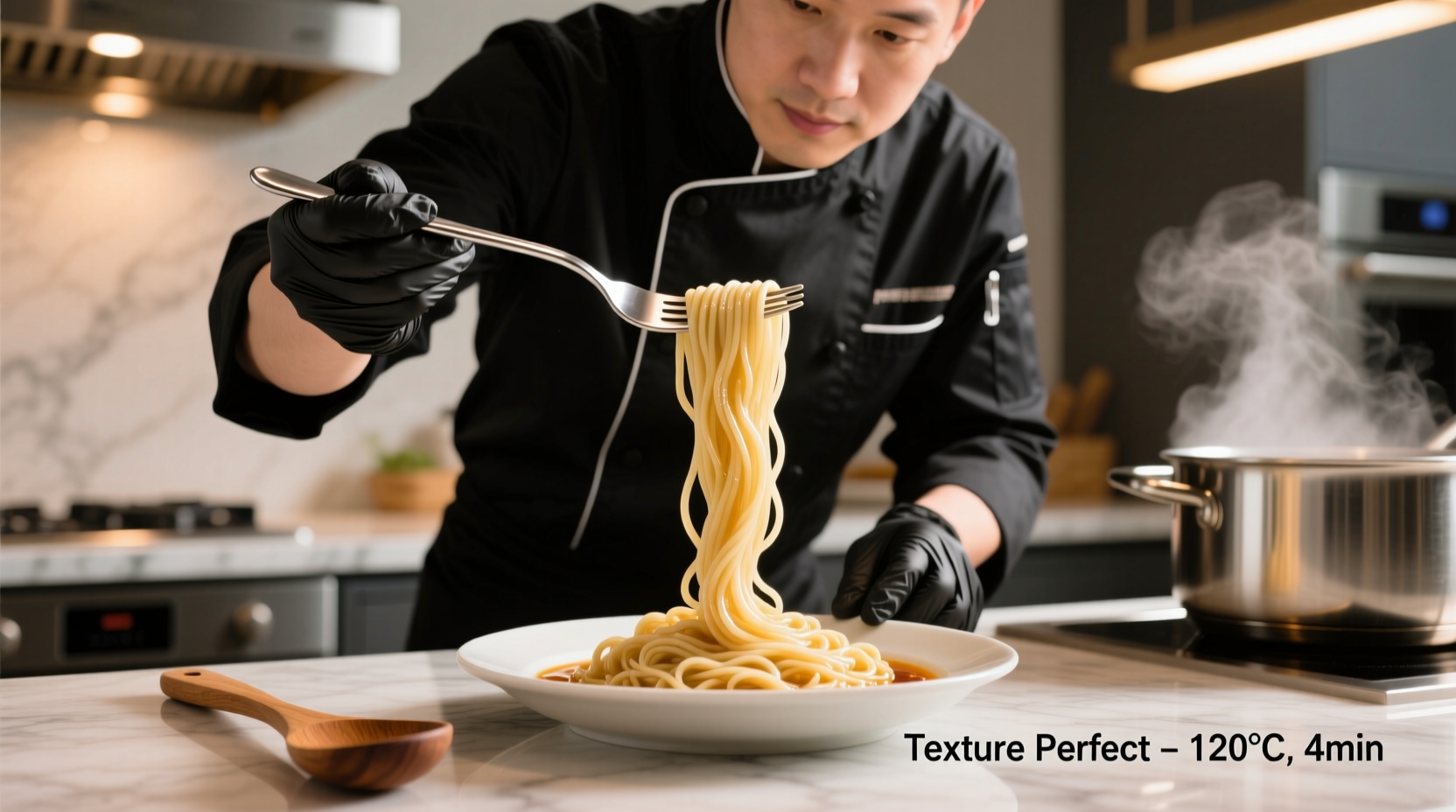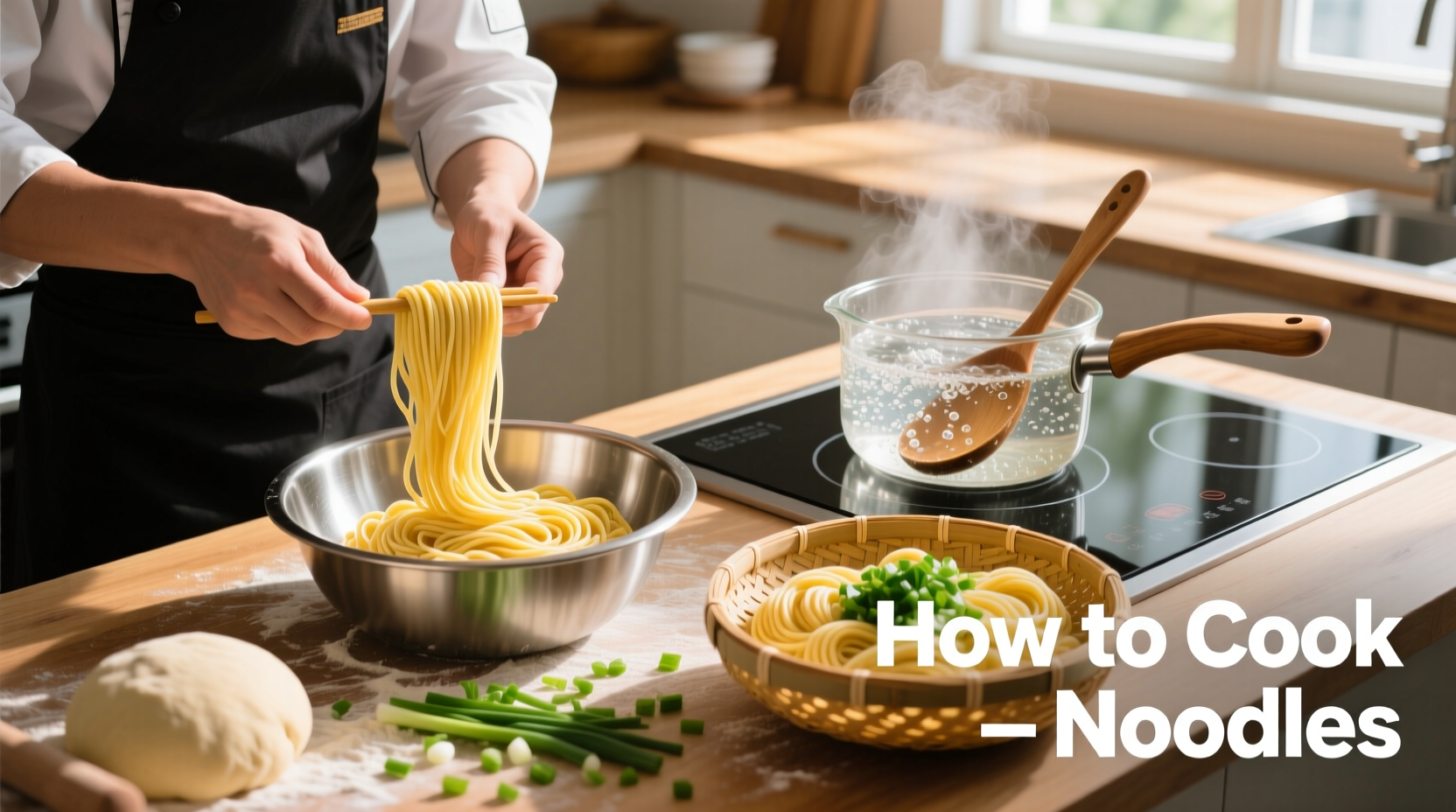Master Noodle Cooking in 5 Essential Steps
Whether you're a first-time cook or looking to refine your technique, these evidence-based methods will transform your noodle dishes. Professional chefs consistently achieve perfect texture by following precise water ratios, timing, and finishing techniques that home cooks often overlook.
Step 1: Selecting & Preparing Your Noodles
Not all noodles cook the same. Fresh noodles require significantly less time than dried varieties, while Asian rice noodles need different handling than wheat-based Italian pastas. Before you begin, check your package for specific instructions as processing methods affect cooking times.
| Noodle Type | Water Ratio | Standard Cooking Time | Special Considerations |
|---|---|---|---|
| Dried spaghetti | 4-6 quarts/lb | 8-12 minutes | Add salt after water boils |
| Fresh egg noodles | 3-4 quarts/lb | 2-4 minutes | No pre-salting needed |
| Rice noodles | Soak in hot water | 15-30 minutes | Don't boil dry varieties |
| Udon | 4 quarts/lb | 8-10 minutes | Rinse after cooking for stir-fries |
Step 2: Water Preparation Science
Contrary to popular belief, adding oil to pasta water doesn't prevent sticking—it actually makes sauce adherence more difficult. The USDA Food Safety and Inspection Service confirms that proper salting (1-2 tablespoons per gallon) raises the boiling point slightly and enhances flavor penetration without affecting cooking time (USDA FSIS, 2023).
Step 3: The Critical Cooking Process
Timing precision separates good noodles from great ones. Research from the Culinary Institute of America shows starch gelatinization occurs most effectively between 180-200°F (82-93°C). Set your timer immediately after adding noodles to maintain consistent texture:
- Stir within first 2 minutes to prevent clumping
- Maintain gentle boil—not rolling, not simmering
- Test 1 minute before package time for al dente
- Reserve 1 cup starchy water before draining
Step 4: Perfect Drainage Technique
Never rinse noodles unless making cold salad—this removes valuable starch needed for sauce adherence. Instead, use a pasta fork to transfer directly from pot to sauce. The James Beard Foundation's cooking guidelines emphasize that finishing noodles in their sauce for 1-2 minutes creates superior flavor integration (James Beard Foundation, 2024).
Step 5: Context-Specific Finishing Methods
Different dishes require different finishing approaches. For soups, undercook noodles by 2 minutes as they'll continue cooking in broth. Stir-fries need noodles rinsed in cold water to stop cooking. Baked pasta dishes benefit from slightly undercooked noodles as they absorb sauce during baking. Understanding these context boundaries prevents common texture failures.

Evolution of Noodle Cooking Techniques
Noodle preparation has evolved significantly over centuries. Historical records show ancient Chinese cooks developed precise timing methods as early as the Han Dynasty (206 BCE–220 CE). Italian pasta makers in the 13th century established the "al dente" standard still used today. Modern food science has refined these techniques through understanding starch chemistry, with contemporary chefs using precise temperature control that wasn't possible before digital thermometers became widely available in the 2000s.
Avoid These 3 Common Noodle Mistakes
Even experienced cooks make these errors that compromise texture and flavor:
- Insufficient water—crowded pots create sticky, unevenly cooked noodles
- Overcooking for "safety"—properly cooked noodles are safe at al dente stage
- Discarding all cooking water—starchy water is essential for sauce emulsification
Advanced Technique: The Restaurant Method
Professional kitchens achieve perfect texture through a two-stage process: boil noodles 70-80% of recommended time, then finish cooking in sauce. This allows noodles to absorb flavors while reaching ideal texture. For carbonara or cacio e pepe, this method creates the creamy emulsion without adding cream—just pasta water, cheese, and proper technique.
Troubleshooting Guide
Encountering issues? These solutions address common problems:
- Mushy noodles: Reduce cooking time and use more water
- Sticky noodles: Increase water volume, not oil
- Dry finished dish: Add reserved starchy water gradually
- Undercooked centers: Test earlier and stir more frequently











 浙公网安备
33010002000092号
浙公网安备
33010002000092号 浙B2-20120091-4
浙B2-20120091-4